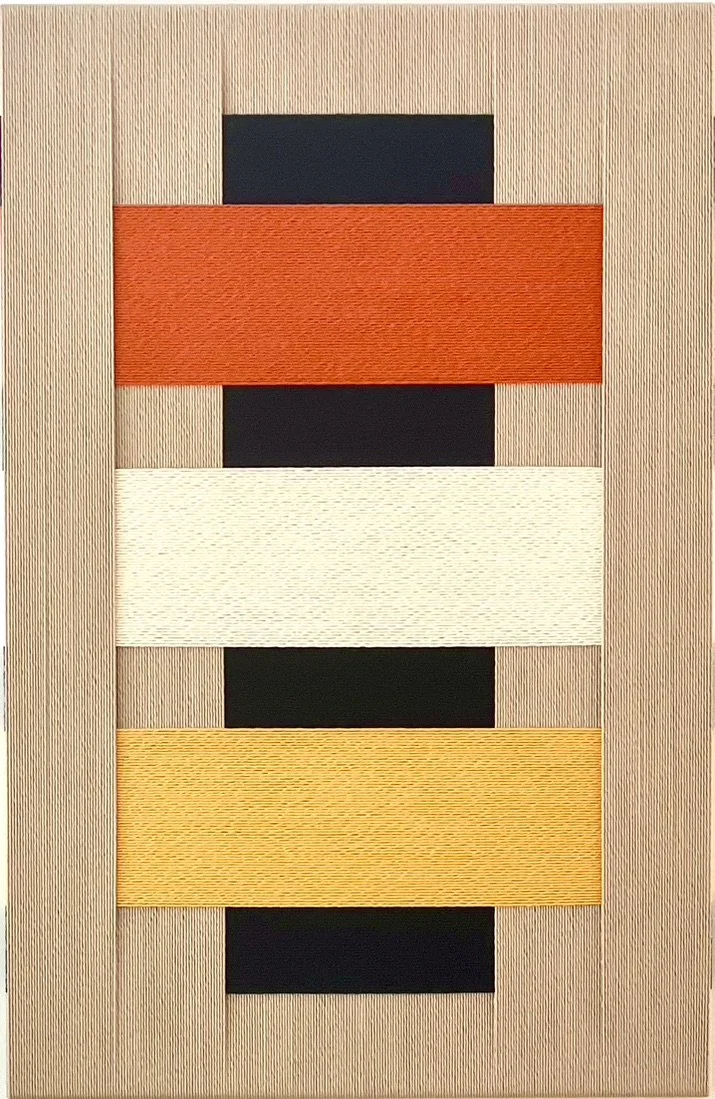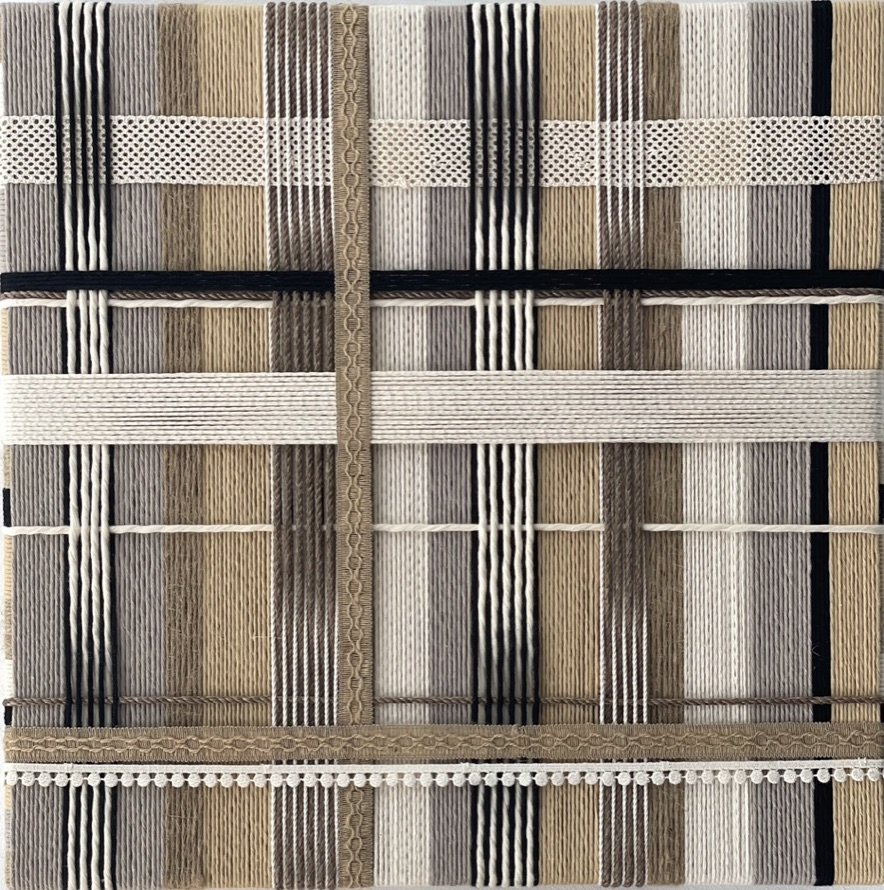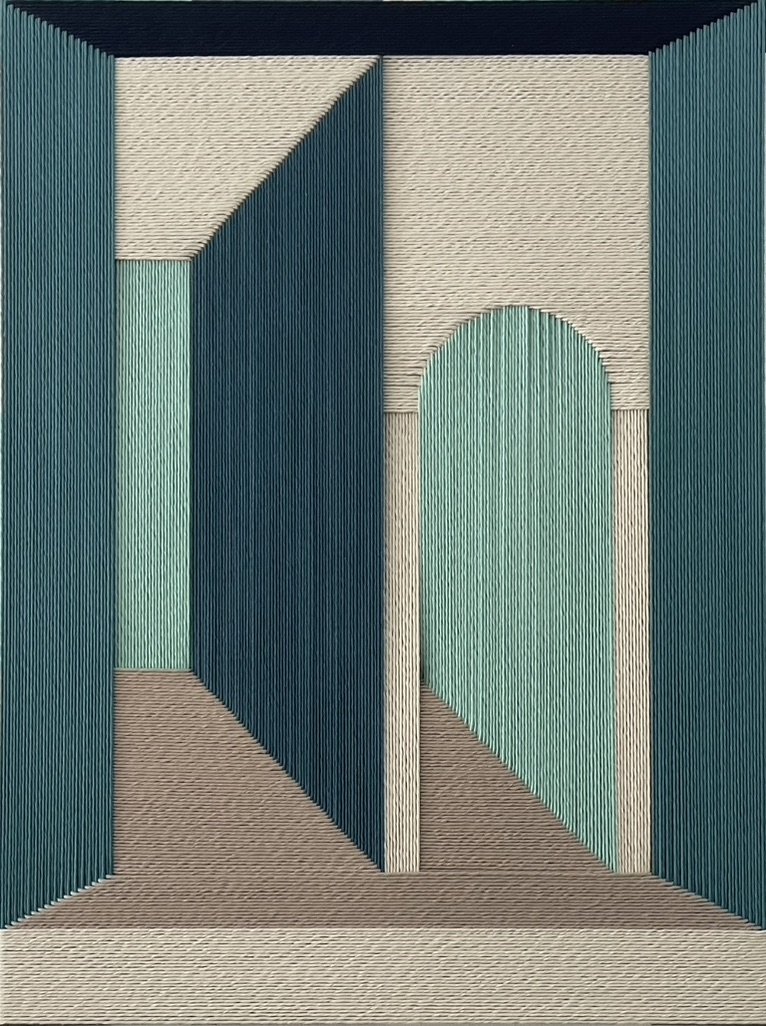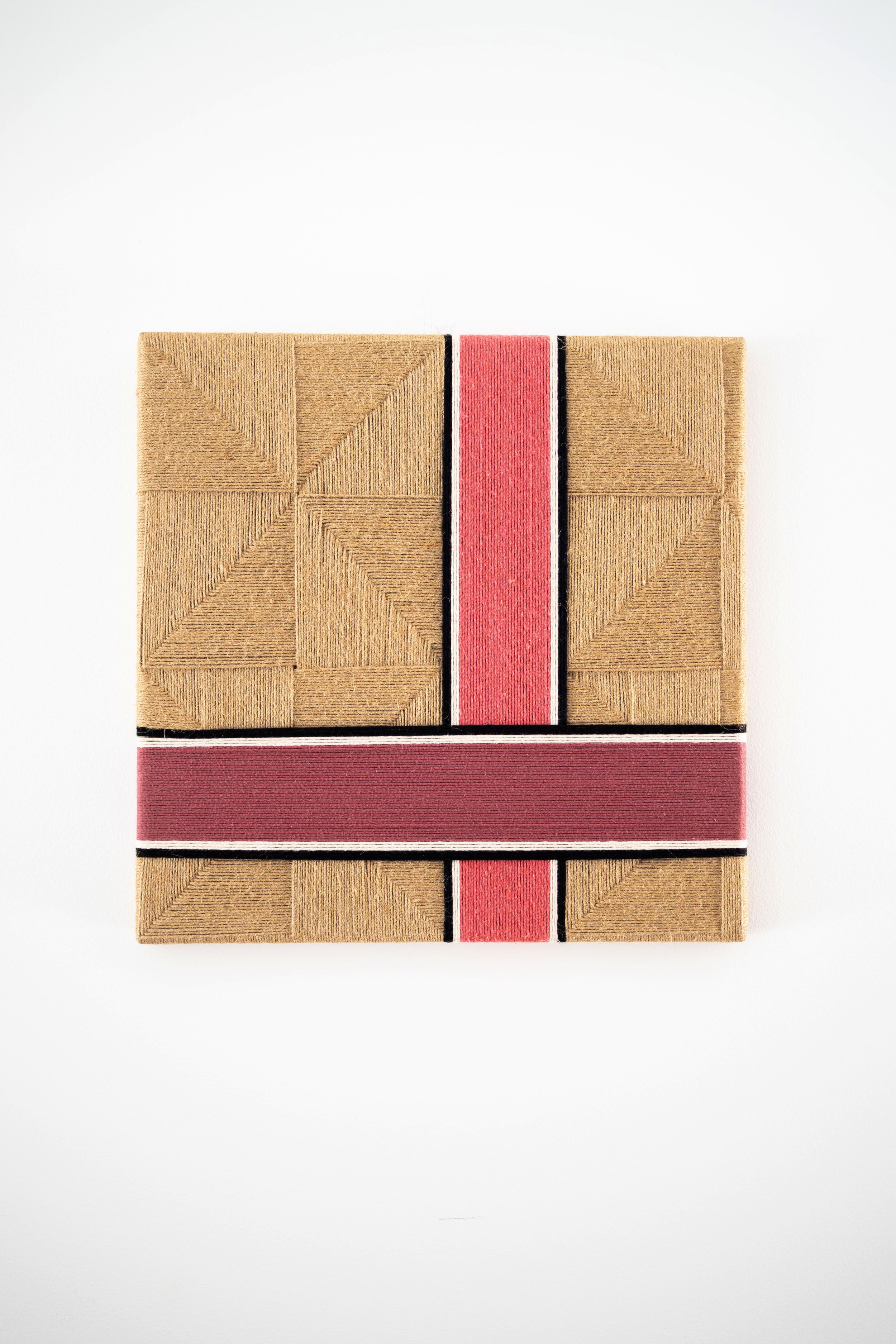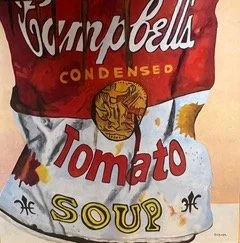Interview with Rosarinho Andrade
Rosarinho Andrade, born in Lisbon, Portugal, in 1960.
With a degree in Medicine, worked almost 30 years in Pharmaceutical Industry, mainly as Marketing&Sales Director.
Arts have always played an important role: music, drawing, embroidery, painting, are examples of artistic engagement throughout her life.
In 2019, at 58 year of age, decides to embrace a dramatic change in her life and studies Interior Design (ID), a lifetime passion, at Cascais School of Arts and Design. Discovers Woven Frames through a colleague and immediately falls in love with it and starts experimenting this Tapestry Technique exploring the different possibilities it offers.
With a passion for Architecture, Geometry and Color she tries to transpose to her frames the learnings acquired during the ID course, for example, how to convey depth or perspective in a 2D setting, which is clearly reflected in her work so far.
In 2023 receives 2 invitations from 2 Spanish galleries to have works exhibited at Luxembourg Contemporary Art Fair and Marbella Art & Design Fair, at collective exhibitions in both galleries and works available for sale in two major international contemporary art sites. She has also received invitations from US and German Galleries. In July 2024, participates in a collective online exhibition and had 5 works displayed in one of the major billboards in NYC.
She uses preferably Portuguese brands, that warrant a sustainable production, and 100% natural fibers; her preference goes to cotton threads, single twist, cords, braided, but also jute and linen. She has also used Arraiolos wool (typical wool of Alentejo region in Portugal). Lately she has also added to her range of materials cotton, linen or jute ribbons or fringes.
Your textile art often incorporates intricate patterns and textures that seem to tell stories beyond their visual appeal. Could you elaborate on the philosophy that drives your creative decisions and how you incorporate narrative elements into your works?
Yes, it's true; immediately after learning the Woven Frames technique, my first concern was to research what was already being done and try to find my own aesthetic. The patterns emerged at this initial stage: one of the ones I made has been with me since childhood and represents the black and white hydraulic tiles from my maternal grandparents' farmhouse in the north of Portugal, a place where I spent magical moments that I fondly remember. Others were more classic patterns, sometimes more complicated, that I made with the aim of understanding the difference between what we idealize and design and the final result.
This initial learning led to a better mastery of the technique, a better understanding of its potential and limitations, and led me to try other types of approaches that better reflect my personal taste.
As I am passionate about architecture, especially contemporary architecture, and geometry, I try to reproduce these aspects in my work, for example the illusion of depth.
Since I took the ID course, I have never looked at architecture in the same way: I am always looking for ways to transfer interesting perspectives that have caught my attention, whether in real life or in photographs, to the frames. The selection of materials and colours is largely inspired by what I see; nature and the urban landscape are inexhaustible sources of inspiration. I like my work to convey order, calm, peace, but above all, aesthetic beauty, and I am immensely pleased when it provokes a feeling in the viewer that is different from the one that originated it.
Textile art is unique in its reliance on diverse materials to communicate texture, form, and even emotion. Can you discuss your process for selecting materials? How do the tactile qualities of the textiles you choose influence the overall impact of your art?
I work almost exclusively with cotton and jute threads, but I have also used Arraiolos wool and linen.
Cotton thread is extremely versatile and offers different types of textures and sizes, which I use depending on the intended purpose. It is also a more resistant thread than wool, has more shine and offers a final result that, in my opinion, is more perfect because it allows a degree of tension that is difficult to achieve with wool.
In more architectural or geometric woven frames, I tend to use only one type of thread, for a more “clean” effect, while in others I really look for this mix of textures and sizes for a more rustic or ethnic result.
More recently, I have incorporated other types of materials such as ribbons or fringes, which have given the works even more texture and three-dimensionality.
Texture is definitely one of the qualities, or perhaps THE most striking quality of my works; whether a cleaner or more elaborate texture, they all draw the observer to touch. Another is the play of light and shadow, very visible, for example, in the frames of the Monochrome Series: the incidence of light on the vertical and horizontal threads gives the illusion of different colors. Size is also one of the main drivers of impact: larger frames attract much more attention than smaller ones.
Being based in Cascais, a town and municipality in the Lisbon District of Portugal, a place with rich historical and cultural textiles, how do you see your work as a continuation or deviation from traditional Portuguese textile practices?
Portugal has a wide variety of tapestry techniques: from the Portalegre Tapestries, Arraiolos rugs, Alentejo blankets woven on a loom to Burel fabrics and blankets, all of which are unique in the world.
This technique that I use, being a tapestry technique, is different from all the others because it does not use a loom nor is it an embroidery on burlap; it is basically the same one that has been used since at least the last century to make rope chair seats, particularly in the Alentejo region of the country. What I try to do is give it a more contemporary feel and use it for a decorative rather than functional purpose. In this sense, I think that my work is an extension of a traditional technique, clearly different and original.
In the context of global conversations about sustainability, how do you approach the use of materials in your art? Are there specific practices you have adopted to ensure your art is environmentally conscious?
I only use 100% natural fibers, which is a sine qua non requirement for me. The brands I work with guarantee sustainable and environmentally friendly production. The fir wood grids that support the woven frames come from sustainable forests. I prefer Portuguese brands but I have also used international brands (EU) when I can't find exactly what I'm looking for; however, environmental concerns are always there.
What are some of the most significant challenges you face when translating your concepts into textile form? How do you navigate the limitations and possibilities of textile media?
As I mentioned, this technique has some limitations that other tapestry techniques do not have, and it is not always possible to transfer what we have envisioned to our work. Often the size of the frame is influenced by the number of vertical and horizontal threads that we need to have in order for the design to come out proportionate. In other situations, this is completely irrelevant!
This is the part of the process that fascinates me the most: having something in mind, drawing it to scale, and understanding what kind of changes I need to make, or not, so that the result is as close as possible to the original idea.
One of my next goals is to try to overcome these limitations; it is something that I have been studying for some time now and I am convinced that I will soon find a solution.
How has your style evolved over the years, and what have been the major influences or events that have shaped this evolution? Are there particular phases or projects that represent turning points in your artistic journey?
There has definitely been an evolution: while at the beginning my exploration focused a lot on patterns and simpler designs, over time, and as I became more proficient in the technique, I felt the need to do something more elaborate; I can't say that there was any external influence or factor that triggered this need, it was something that came from within. It was at that time that the Architecture Series fully emerged, the result of my love for this art, where I explore perspective and depth.
More recently, I explored more rounded or organic shapes, both in the Architecture Series and in the Geometry Series; it was a whole new learning experience because these types of shapes give a three-dimensionality that is completely different from straighter lines. It's fascinating to see the evolution of the texture of the frame as we go along and to be surprised by effects, of light and shadow, or reliefs, that we hadn't imagined at the outset.
Your works are often displayed in diverse settings, from galleries to private homes. How do you think the setting impacts the interpretation of your art? Do you create with a specific space in mind?
I believe that this type of work is very versatile and suitable for any interior space, whether public or private: that is why, when I publish my work, I try to place it in different settings so that those who see it can see how adaptable it is. The fact that I only work on interior pieces is due to the type of materials I use, as the materials suitable for exteriors contain synthetic fibers.
Every piece of work is always carefully thought out and planned before being executed, sometimes with a specific location in mind; in these cases the choice of colours and materials is more targeted. In other situations, I have total freedom and let my imagination run wild.
Textile art can be highly interactive, engaging more senses than just sight. Do you consider the tactile or interactive element of your artworks when creating them, and how do you intend for audiences to interact with your pieces?
The tactile element is always present, whether we want it or not, it is an intrinsic part of the Woven Frames technique: no matter how simple the drawing is, and even using only one type of thread, there will always be textures and three-dimensional effects that are very difficult to convey, whether in photography or another medium. This is a constant concern; I usually say that these frames have to be seen in person to fall in love with them. One of the comments I receive most often is “It’s even more beautiful in person than in the photograph”. This is why I have been trying to get closer to the public over the last year and a half, both in galleries and Contemporary Art Fairs, which is not easy, and even in street markets linked to Art and Design, where people’s curiosity and adherence have been very good! I also try to be present at events that promote Art/Design made in Portugal: this is the case of the next event in which I will participate at the end of September, the Biennial Arts & Crafts | New Design. In addition, I have also been working with some Concept Stores in the area of Interior Design, where I will soon have some pieces on display.
Another way of promoting my work is through workshops; teaching is an activity that gives me great pleasure and always ends up reaching more people than those who are present.
Where do you see the future of textile art heading, especially in the digital era where traditional art forms are being redefined? How do you incorporate modern technology into your work, if at all?
Over the last few years, textile art has seen significant growth and recognition in Portugal, largely due to artists such as Vanessa Barragão and João Bruno Videira. However, there is still a long way to go!
Since this type of work is 100% manual, I don't think that new technologies will add anything; on the contrary, I think we are witnessing a return to the origins and the appreciation of what is 100% handmade.
However, in my case, new technologies help in planning the frames and in promoting them: for example, I use an application on my mobile phone that places my pieces in different environments, which then allows me to promote them in a more professional way. Social media, mainly Instagram, is currently my major “partner” in promoting my work.
As an artist deeply involved in a specific medium like textile, what kind of legacy do you wish to leave through your art? How do you hope your works will influence both the current and future generations of artists?
For me, art is something that captivates me, whether it's because of its color, shape, theme, or medium.
I think that what any artist aims for is for their work to be immediately recognizable; if I can get someone to say, "This piece is by Rosarinho Andrade," that will be a sign of mission accomplished!
But I work mainly for myself, in the hope that what I do will reach other people's hearts. If that inspires others to do things differently, that will be a great source of pride!

